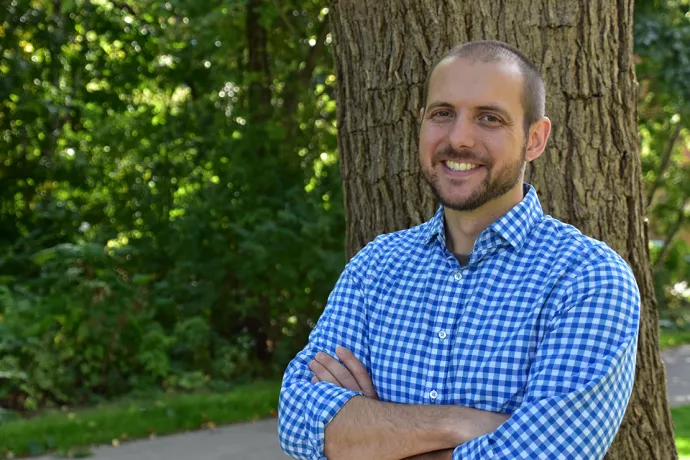
UTM prof recognized globally for expertise in gender identity
Doug VanderLaan has spent the past 15 years gaining a better understanding of gender expression and people – primarily youth – who are gender diverse. And now his expertise is being recognized globally.
A psychology professor at UTM and director of the Biopsychosocial Investigations of Gender Laboratory, VanderLaan’s team undertakes cross-cultural research that considers gender identity in North America, primarily in Toronto, as well as in Southeast Asia, with a focus on Thailand where VanderLaan has a field site and collaborators. The researchers employ a comprehensive approach that intersects neuroscience and several psychology sub-fields, including developmental, cultural and social, cognitive, biological and clinical.
“Thailand, out of all human cultures, has probably the most socially visible sexual-orientation and gender diversity of any place on earth,” says VanderLaan. “They have categories that go beyond the binary of men and women that have been recognized for decades, if not centuries.
“Of course, over the years Western ideas have been introduced into the mix with more traditional Thai categories, so there is an interesting cultural evolution in Thailand related to the different expressions and variations. But I thought that if I am going to better understand variation in both sexual orientation and gender identity, I should go to a place where that variation exists, and where it has more of a history of being highly socially visible and accepted.”
He provides examples of the variations in Thailand, including the term sao praphet song, which translates to a “second kind of woman,” and relates to transfeminine individuals who were assigned male at birth. There is also a group of transmasculine individuals who were assigned female at birth that are known as toms, which has a similar meaning as “tomboy” in Thai culture.
When VanderLaan started down this academic path, he began working in the lab of Professor Paul Vasey at the University of Lethbridge in Alberta, who had set up a field site in the Samoan Islands to study human sexuality and gender.
This led to VanderLaan's PhD work studying sexual orientation, and in particular a Samoan population of individuals assigned male at birth who are called fa’afafine, which means “in the manner of a woman.” Fa’afafine are a third or non-binary gender in Samoan culture, and their feminine gender expression is evident from a young age.
“In starting my program of research here, I wanted to return to the cross-cultural studies I had done previously because I felt like that was my training and those were my roots,” says VanderLaan, who also works with CAMH examining the brain development of trans adolescents who are in the process of transitioning through gender-affirming hormonal treatments.
His scholarly credentials are now placing him in an elite league of academics: based on Expertscape's PubMed-based algorithms, he is among the top researchers in his field.
“When I found out about this ranking, my initial reaction was a bit surprised to be in the top 0.1 per cent because it is such a big field and there are a lot of people who study gender identity,” says VanderLaan. “But I know that there are very few people studying children who are gender diverse, and there’s also very few people who are doing the kind of cross-cultural studies that my lab is doing.”
And unlike other gender diversity research, VanderLaan’s research takes place “beyond the clinic,” transcending both North American and Western culture with its cross-cultural and community focus, integration of multiple perspectives and continued consideration of children and adolescents’ varied experiences of gender diversity throughout their youth.
“We see commonalities across places, but we also see differences, and I think a lot of those are driven by the ways that societies react to gender diversity,” says VanderLaan.“I am interested in further exploring how growing up in a culture where you have been relatively accepted, and as a member of a gender-diverse group that is more visible within society, impacts someone’s development and well-being.”
